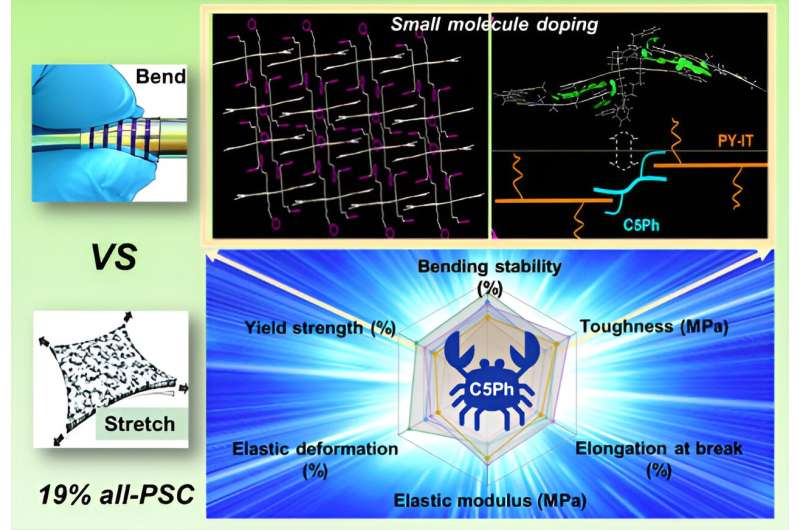
JUNE 12, 2024 by Zhang Nannan, Chinese Academy of Sciences
Collected at: https://techxplore.com/news/2024-06-scientists-high-efficiency-polymer-solar.html
In the thriving photovoltaic industry, all-polymer solar cells (all-PSCs) are gaining attention for their mechanical flexibility, lightweight design, and ability to be printed at low temperatures. However, the complex molecular structures of the polymer materials in all-PSCs pose challenges in controlling the microstructures of the active layers, limiting their performance metrics.
The lack of a standardized evaluation framework that links stress-strain characteristics with mechanical stability in flexible devices further complicates progress in improving device performance and stability.
In a study published in Energy & Environmental Science on May 14, scientists from the Qingdao Institute of Bioenergy and Bioprocess Technology of the Chinese Academy of Sciences introduce small molecules with phenyl alkyl side chains as solid additives.
By establishing clamp-shaped multiple non-covalent interactions with polymer acceptors, with special emphasis on additional interactions between the endcap motif of the polymer and the phenyl terminal of the additive, the researchers have significantly enhanced both the photovoltaic performance and mechanical stability of all-PSCs. They also conducted a thorough analysis to elucidate the correlation between the stress-strain characteristics of the active layer and the mechanical stability of the device.
According to the researchers, they have achieved an impressive efficiency of 19.01% with a fill factor of nearly 80% for all-PSCs with pseudo-planar heterojunctions, which is one of the highest values attained to date for all-PSCs.
Through investigation and analysis of variables such as fracture elongation, toughness, elastic deformation, elastic modulus, and yield strength under stress-strain scenarios, the researchers demonstrated that the elastic deformation of the active layers provides a more accurate reflection of the mechanical performance of flexible devices compared to conventional metrics such as elongation at break and elastic modulus.
“This study serves as an important foundation for the optimization of flexible devices and provides essential guidance for the development of next-generation all-PSCs with exceptional performance and mechanical flexibility,” said Prof. Bao Xichang, corresponding author of the study.
More information: Jianxiao Wang et al, All-polymer solar cells with 19% efficiency via introducing pincer-shaped non-covalent bond interactions, Energy & Environmental Science (2024). DOI: 10.1039/D4EE01117A
Journal information: Energy & Environmental Science

Leave a Reply